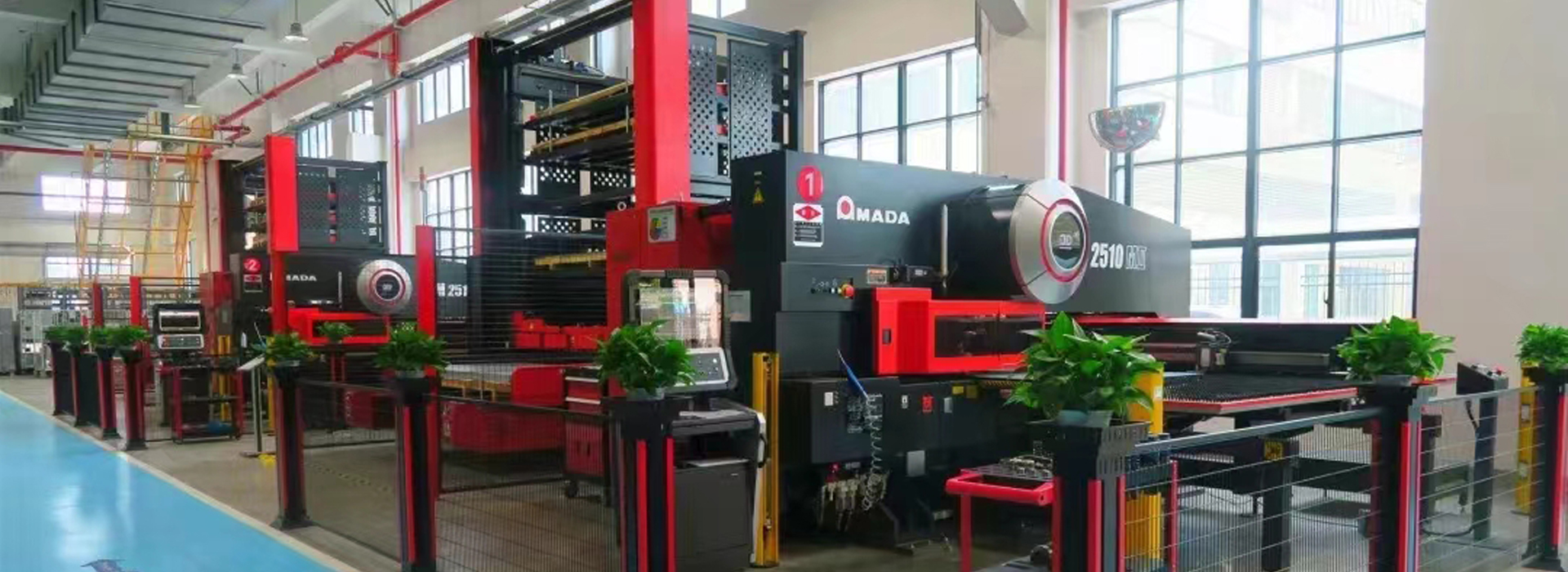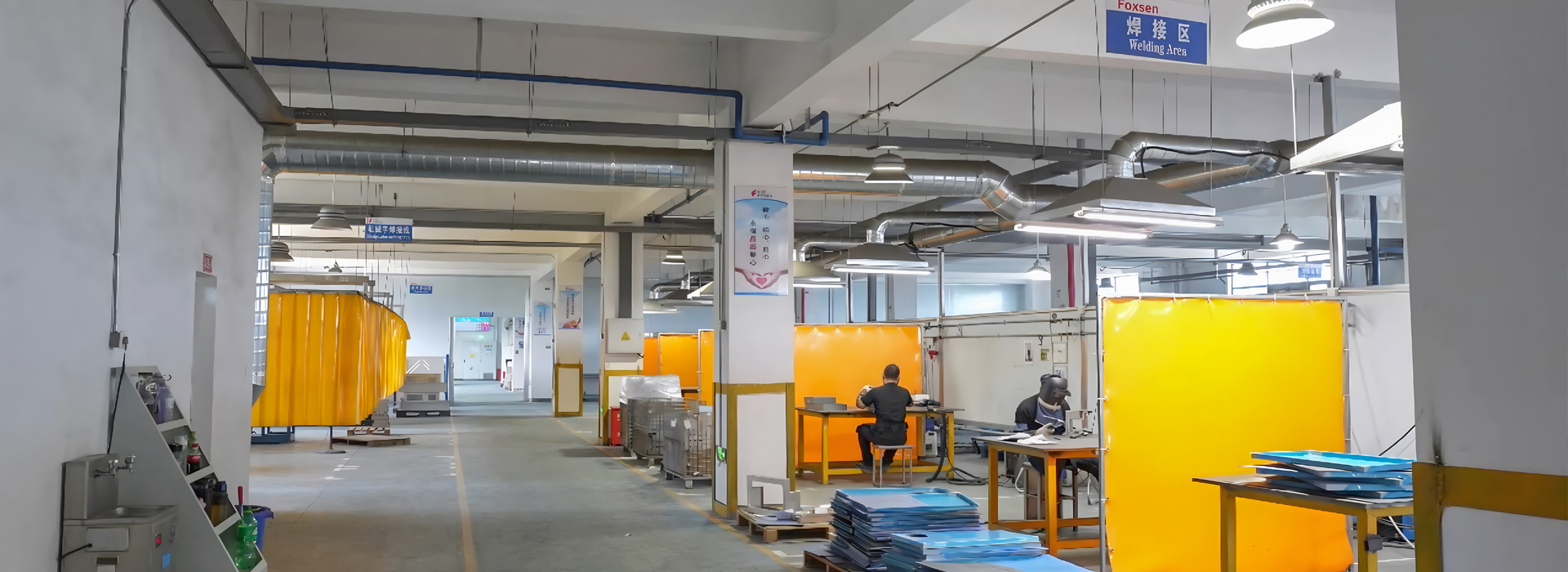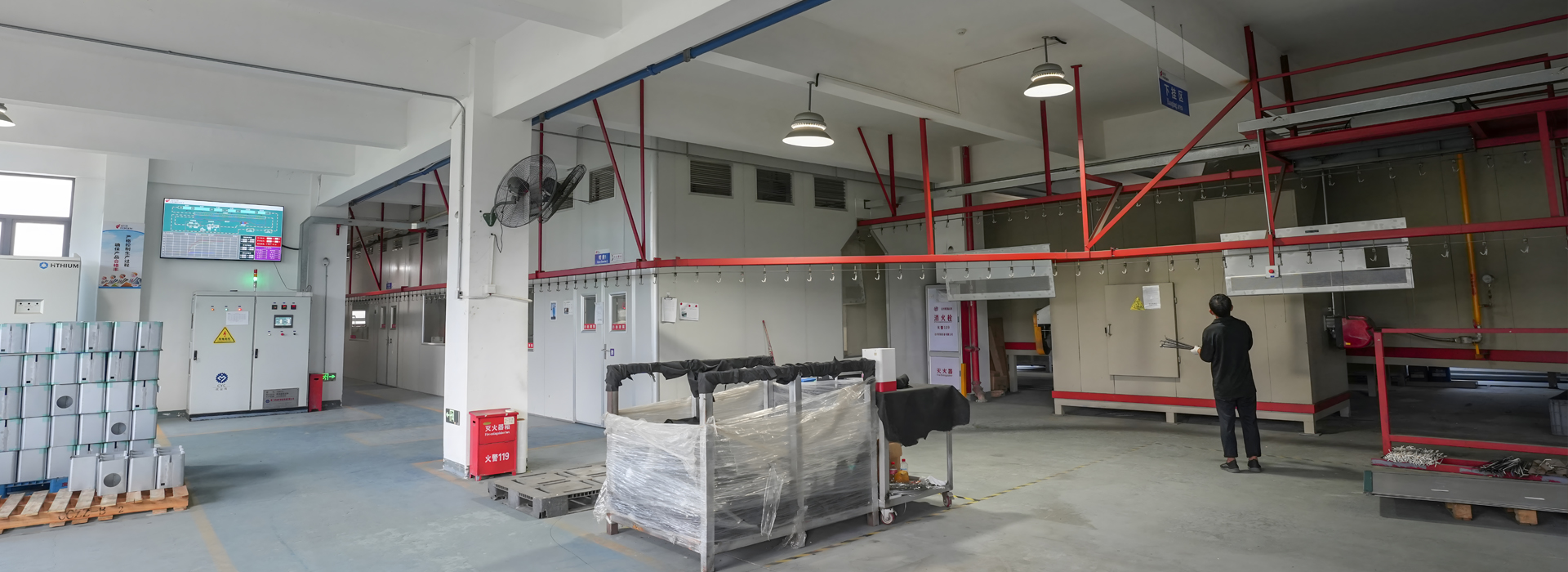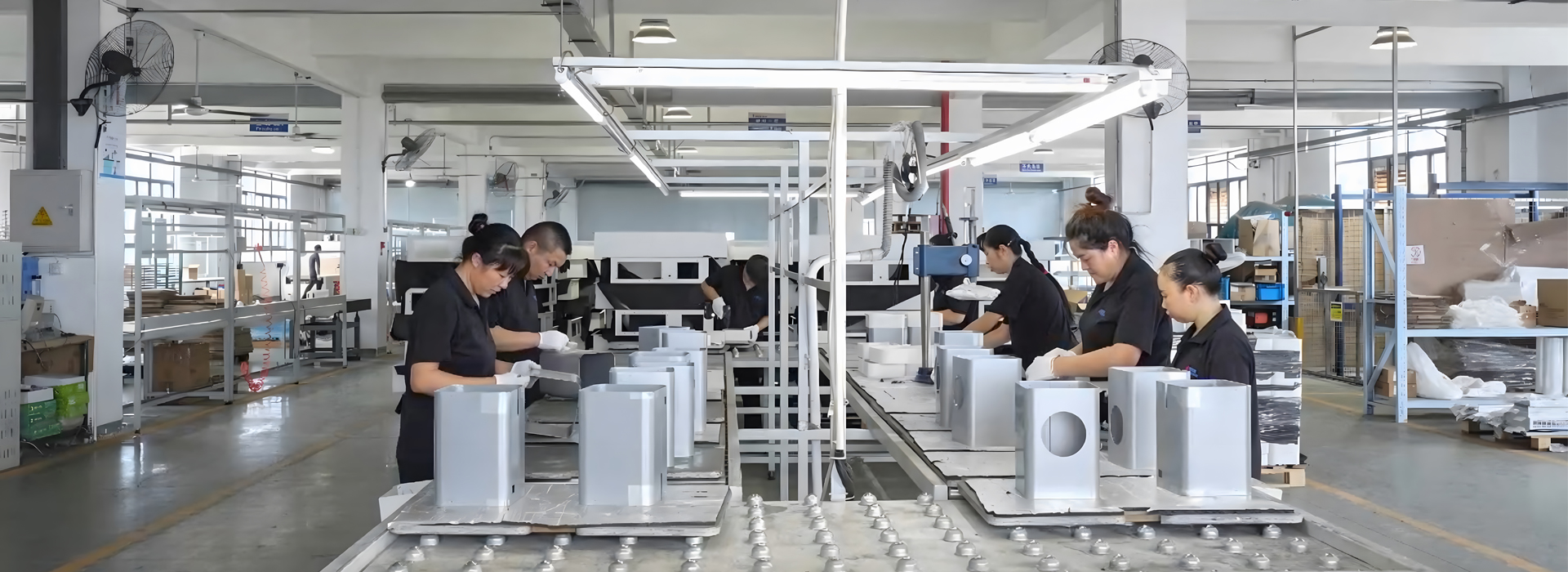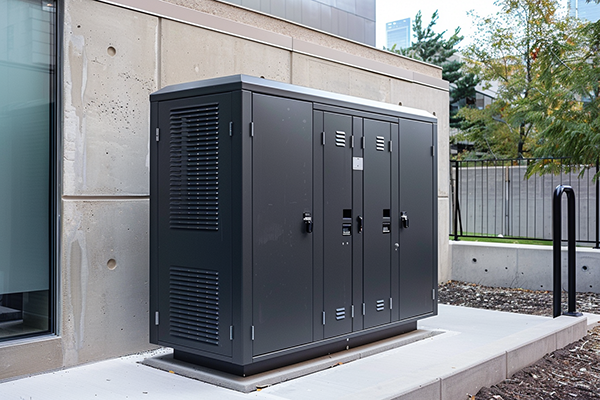
Energy storage cabinet enclosures play a crucial role in modern energy systems by housing the components needed for efficient energy management. These cabinets protect sensitive equipment like batteries and control systems, ensuring reliability and optimal performance. You benefit from advanced technologies like Maximum Power Point Tracking (MPPT) and intelligent power management, which improve energy utilization and reduce costs. The global energy storage market, valued at $13.7 billion in 2020, is projected to grow to $34.8 billion by 2026, highlighting the increasing demand for energy storage cabinets in residential, commercial, and industrial applications.
Key Takeaways
Energy storage cabinets keep equipment safe and working well.
These cabinets save energy and money by storing cheap power for busy times.
Safety features meet strict rules, making them safe to use anywhere.
Energy storage cabinets work with solar and wind power to help you use them better.
Taking care of and installing these cabinets correctly makes them last longer and work better.
What Is an Energy Storage Cabinet?
Definition and Purpose
An energy storage cabinet is a specialized enclosure designed to house components that store and manage electrical energy. These cabinets play a vital role in modern energy systems by ensuring the safe and efficient operation of energy storage technologies. You’ll find that they protect sensitive equipment, such as batteries, inverters, and cooling systems, from environmental factors like dust, moisture, and temperature fluctuations.
Energy storage cabinets are classified into different types based on their design and application. Here’s a breakdown:
These cabinets are essential for various applications, ranging from residential energy storage solutions to large-scale industrial systems. Their primary function is to store energy efficiently while ensuring reliability and safety.
How Energy Storage Cabinets Work
Energy storage cabinets operate by integrating multiple components that work together to store, convert, and manage electrical energy. At the core of the system, batteries store energy in chemical form and release it as electrical energy when needed. Common battery types include lithium-ion, lithium iron phosphate, and lead-acid batteries.
The cabinet also houses a Battery Management System (BMS), which monitors and regulates battery performance to ensure safe operation. You’ll notice that the inverter plays a crucial role by converting direct current (DC) from the batteries into alternating current (AC) for powering equipment or feeding energy back into the grid.
To maintain optimal performance, energy storage cabinets rely on cooling systems to regulate temperature. Studies show that lithium batteries perform best within a temperature range of 15–35 °C. Advanced cooling mechanisms can increase the annual cooling coefficient of performance (ACCOP) by 5%–25%, ensuring efficient energy storage function.
Energy storage systems also incorporate control strategies to manage power flow and maintain stability. For example, active/reactive power control (PQ control) helps balance voltage and frequency during grid-connected operations. Additionally, power-intensive technologies like flywheels and supercapacitors provide rapid responses to transient disturbances, ensuring uninterrupted energy supply.
Emerging trends in energy storage cabinet technology include the integration of artificial intelligence (AI) and machine learning (ML) for real-time optimization. Smart technology enables you to monitor conditions remotely, while modular designs offer flexibility and scalability. These advancements make energy storage cabinets more efficient, sustainable, and adaptable to diverse applications.
Key Components of an Energy Storage Cabinet

Energy Storage Battery Cabinet and Modules
The energy storage battery cabinet forms the backbone of energy storage cabinets. It houses batteries that store energy for later use, ensuring a reliable power supply during peak demand or outages. You’ll find that these cabinets often contain high-capacity lithium batteries, which are favored for their efficiency and long cycle life. Lithium-ion and lithium iron phosphate batteries dominate the market due to their high-performance battery technology and ability to withstand frequent charging and discharging cycles.
To optimize battery performance, energy storage cabinets integrate a battery management system. This system monitors the charging and discharging process, ensuring safe operation and preventing issues like overcharging or overheating. An improved system design method (SDM) has been introduced to analyze energy-power relationships within these cabinets. This approach harmonizes battery performance with other components, such as power electronics, enabling flexible adaptation to operational needs.
Cooling and Ventilation Systems
Cooling and ventilation systems play a critical role in maintaining the efficiency and safety of energy storage cabinets. Batteries generate heat during operation, and without proper cooling, they risk overheating, which can lead to reduced performance or even safety hazards. You’ll notice that advanced cooling mechanisms, such as air and liquid cooling, are commonly used to regulate temperature and prevent thermal runaway propagation.
Air-cooling technology is particularly effective due to its simplicity and cost-efficiency. It ensures uniform airflow distribution, preventing localized overheating and extending battery life. For example, the KONGSBERG energy storage system employs passive heat insulation alongside active cooling systems to enhance safety and efficiency. Similarly, PVMars’ cabinets use durable materials like polymer coatings and closed-cell insulation to withstand harsh conditions for decades, ensuring consistent performance.
Monitoring and Control Systems
Monitoring and control systems are essential for managing the operation of energy storage cabinets. These systems track key performance indicators, such as efficiency, reliability, and longevity, to ensure optimal functionality. Intelligent management features allow you to monitor conditions remotely, enabling proactive maintenance and reducing downtime.
A robust power control system ensures stability during the charging and discharging process. It balances power flow, maintains voltage levels, and prevents disruptions. Recent advancements in energy management systems have introduced AI-driven solutions that optimize energy utilization and scalability. For instance, intelligent monitoring can adapt to growing energy demands, ensuring uninterrupted operation even during computationally intensive workloads.
The following table highlights key performance indicators for monitoring and control systems:
Benefits of Energy Storage Cabinets
Reliability and Consistent Power Supply
Energy storage cabinets provide a stable power supply, ensuring reliable power support for your energy needs. By storing energy during off-peak hours and discharging it during peak demand, these systems enhance grid stability and reduce the risk of blackouts. For instance:
They mitigate voltage sags, which can cause equipment shutdowns lasting hours and result in significant financial losses.
Advanced energy storage systems improve response times to below 20 milliseconds, preventing disruptions.
Over a 20-year period, the present value benefit of voltage sag mitigation can reach nearly $10 million.
These features make energy storage cabinets indispensable for both residential and commercial applications, where uninterrupted power is critical.
Energy Efficiency and Cost Savings
Energy storage cabinets optimize energy usage, helping you save money while reducing environmental impact. They store low-cost energy for use during peak pricing periods, lowering operational costs for businesses and utilities. Key benefits include:
Enhanced energy efficiency, with systems like solar-wind-LCES achieving up to 94.61% efficiency.
Flexibility in grid management, ensuring smooth delivery of intermittent renewable resources like wind and solar energy.
Cost savings by avoiding disruptions during outages and maintaining normal operations.
For commercial applications, energy storage cabinets also enable peak shaving, which reduces energy demand charges and operational expenses. These systems not only improve your bottom line but also contribute to a more sustainable energy future.
Safety and Protection Features
Safety is a top priority in energy storage cabinet design. Modern systems comply with rigorous safety standards, such as UL 9540 and UL 1973, ensuring safe operation in residential, commercial, and industrial settings. Certifications like CE Marking and UKCA Marking further validate their compliance with regional safety regulations.
Key safety features include:
Fire risk mitigation through UL 9540A certification, crucial for commercial energy storage cabinet applications.
Battery integration safety, ensured by UL 1973, which enhances the reliability of battery energy storage systems.
Advanced cooling and ventilation systems that prevent overheating and thermal runaway.
These measures protect your investment and ensure the safe operation of energy storage systems, making them a reliable choice for long-term energy management.
Applications of Energy Storage Cabinets
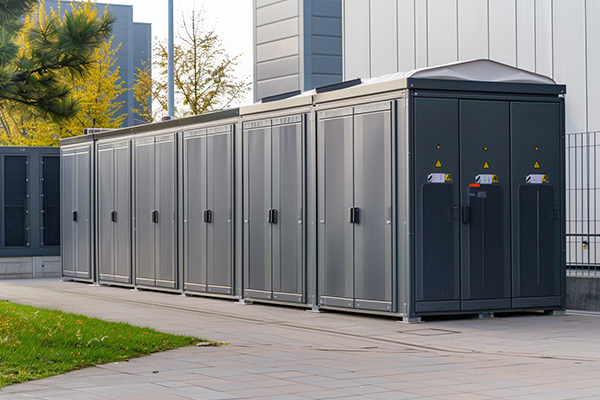
Energy storage cabinets serve a wide range of purposes across residential, commercial, and renewable energy sectors. Their versatility and efficiency make them indispensable in modern energy systems.
Residential Energy Storage Solutions
Energy storage cabinets provide homeowners with reliable and efficient energy storage solutions. These systems store excess energy generated by solar panels during the day, allowing you to use it at night or during power outages. By integrating a battery energy storage system into your home, you can reduce reliance on the grid and lower electricity bills.
Portable energy storage cabinets are particularly useful for residential applications. They offer flexibility and can be easily moved to different locations. With features like a three-dimensional security system and an operating temperature range of -30℃ to 55℃, these cabinets ensure safe and efficient operation in various environments. Additionally, their payback period of 3-5 years and a 40% reduction in Levelized Cost of Storage (LCOS) make them a cost-effective choice for homeowners.
Key benefits of residential energy storage cabinets include:
Backup power during outages.
Cost savings through intelligent energy management.
Enhanced energy independence.
Commercial and Industrial Applications
In commercial and industrial settings, energy storage cabinets play a crucial role in managing energy demands and ensuring operational efficiency. These systems support applications such as factory park energy storage, peak load shifting, and emergency backup power. By integrating with microgrids, they enhance energy reliability and reduce costs.
A commercial energy storage cabinet, like the ESS1-100/215-0.4-L model, offers impressive specifications:
Nominal energy of 215kWh.
AC rated power of 100kW.
Charge/discharge efficiency of 92.5%.
Lifespan of 15 years with 10,000 cycles.
These features make them ideal for businesses looking to optimize energy usage and reduce operational expenses. However, challenges such as high initial investment costs and limited battery lifespan remain barriers to adoption. Advancements in battery technology and the rise of decentralized energy systems are expected to address these issues, making energy storage cabinets even more accessible for commercial applications.
Renewable Energy Integration
Energy storage cabinets are essential for integrating renewable energy sources like solar and wind into the grid. These systems store surplus energy generated during peak production times and release it when renewable sources are unavailable. This ensures a stable and reliable power supply, even during periods of low energy generation.
The robust construction of energy storage cabinets allows them to endure extreme weather conditions, making them suitable for outdoor renewable energy installations. Their ability to operate efficiently in challenging climates enhances the reliability of renewable energy systems.
Key features of energy storage cabinets for renewable energy integration include:
Charging efficiency of 92.59% and discharging efficiency of 92.38%.
Daily efficiency of 85.53%.
Strategies to improve efficiency, such as optimizing system design and implementing smart technologies.
The LoadNet model significantly improves the efficiency and reliability of power system operations. It facilitates seamless integration of renewable energy sources by accurately predicting load and renewable energy generation. Additionally, it optimizes energy storage system charging and discharging schedules.
By utilizing energy storage cabinets, businesses and homeowners can maximize the benefits of renewable energy systems, reduce reliance on fossil fuels, and contribute to a more sustainable future.
Emergency and Backup Power Systems
Emergency and backup power systems play a vital role in ensuring uninterrupted energy supply during unexpected power outages. These systems rely on energy storage cabinets to store and deliver power when the primary grid fails. By integrating advanced technologies, they provide a reliable solution for critical applications where power continuity is essential.
Energy storage battery cabinets form the backbone of these systems. They house high-capacity batteries that store energy for immediate use during emergencies. Lithium-ion and lithium iron phosphate batteries are commonly used due to their efficiency and durability. These batteries can handle frequent charge and discharge cycles, making them ideal for backup power systems. Portable energy storage cabinets also offer flexibility, allowing you to deploy them in various locations as needed.
The effectiveness of energy storage cabinets in emergency power systems is well-documented. For example:
A hospital successfully maintained the operation of life-saving equipment during a major power outage, ensuring patient health and safety.
An industrial facility effectively used emergency generators to sustain production and avoid significant financial losses during a power failure.
These examples highlight the reliability and importance of energy storage battery cabinets in critical situations. They ensure that essential services remain operational, even during prolonged outages.
Portable energy storage cabinets are particularly useful for emergency applications. Their compact design and mobility make them suitable for temporary setups or remote locations. These cabinets often feature robust construction, allowing them to withstand harsh conditions. With an operating temperature range of -30℃ to 55℃, they ensure consistent performance in diverse environments.
In addition to reliability, energy storage cabinets offer scalability. You can expand their capacity to meet growing energy demands. This flexibility makes them suitable for a wide range of applications, from residential backup power to large-scale industrial systems. Advanced monitoring and control systems further enhance their functionality, allowing you to manage energy usage efficiently and prevent disruptions.
The integration of smart technologies has revolutionized emergency power systems. Modern energy storage cabinets feature intelligent management systems that optimize battery performance and extend their lifespan. These systems monitor key parameters, such as temperature and charge levels, to ensure safe and efficient operation. By leveraging these technologies, you can reduce maintenance costs and improve the overall reliability of your backup power system.
Safety and Maintenance of Energy Storage Cabinets
Installation Best Practices
Proper installation of energy storage cabinets ensures their efficiency and safety. Following best practices minimizes risks and enhances the longevity of your system. According to the "Battery Energy Storage Systems (BESS) Best Practices Report," you should:
Choose a location with adequate ventilation to prevent overheating.
Ensure the cabinet is installed on a stable, level surface to avoid structural damage.
Use certified professionals for installation to comply with safety regulations.
Verify that all electrical connections are secure and insulated to prevent faults.
These steps create a solid foundation for your energy storage system, reducing the likelihood of operational issues.
Regular Maintenance and Inspections
Routine maintenance is essential for the safe and efficient operation of energy storage cabinets. Monthly inspections help identify potential problems before they escalate. Cleaning the cabinet and its components prevents corrosion and ensures optimal performance.
The following table highlights key maintenance protocols:
By adhering to these practices, you can extend the lifespan of your energy storage system and maintain its reliability.
Adhering to Safety Standards
Compliance with safety standards is critical for minimizing risks associated with energy storage cabinets. Certifications like UL 9540 and UL 1973 validate the safety and reliability of your system. These standards address fire prevention, electrical safety, and thermal management.
Thermal runaway incidents highlight the importance of robust safety protocols. Over 30 large-scale battery systems have experienced such events, emphasizing the need for a well-designed Battery Management System (BMS). Regular inspections and adherence to safety guidelines mitigate these risks effectively.
By following these safety measures, you protect your investment and ensure the safe operation of your energy storage system.
Energy storage cabinets play a pivotal role in modern energy systems. They ensure efficient energy management, reliable power supply, and seamless integration of renewable sources. Their diverse applications, from residential backup solutions to grid-scale systems, make them indispensable for addressing energy challenges. The liquid-cooled energy storage cabinet market is expected to grow significantly, reaching $2.5 billion by 2025. This growth reflects the rising demand for advanced systems that enhance efficiency and lifespan, especially in regions relying on renewable energy. By exploring energy storage cabinet enclosures, you can unlock sustainable and cost-effective energy solutions tailored to your needs.
FAQ
What is the lifespan of an energy storage cabinet?
The lifespan depends on the battery type and maintenance. Lithium-ion batteries typically last 10–15 years with proper care. Regular inspections and adherence to safety standards can extend the system's overall life.
Can energy storage cabinets be used outdoors?
Yes, many energy storage cabinets are designed for outdoor use. They feature weatherproof enclosures and robust materials to withstand harsh conditions. Always check the manufacturer's specifications for environmental compatibility.
How do I choose the right energy storage cabinet for my needs?
Consider your energy requirements, available space, and budget. Look for features like battery capacity, cooling systems, and safety certifications. Consulting a professional can help you make an informed decision.
Tip: Modular designs allow you to scale up as your energy needs grow.
Are energy storage cabinets safe to use?
Modern energy storage cabinets comply with strict safety standards like UL 9540. They include features like fire prevention, thermal management, and advanced monitoring systems to ensure safe operation.
Do energy storage cabinets work with renewable energy systems?
Absolutely! Energy storage cabinets store excess energy from solar panels or wind turbines. This stored energy can be used during low production periods, ensuring a consistent power supply and maximizing renewable energy utilization.

